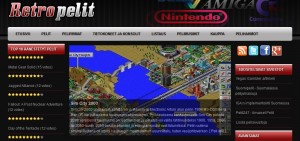Disc golf course design book focuses on underutilized landscapes
Designing a new disc golf course is no easy task. Improving an already existing course is even tougher. Many think they are able to look at an open piece of property and lay out 18 holes for a course of their dreams, but there are many factors that should come into play when designing not only a single hole, but an entire course.
Michael Plansky researched disc golf course design and how it is common to not take full advantage of what is naturally provided to us. In fact, Plansky used this as his thesis at Cal Poly Pamona. Plansky turned this thesis into a published book titled “Disc Golf Course Design: Inscribing Lifestyle into Underutilized Landscapes.” Along with a brief history of the sport, Plansky provides a very detailed analysis of designing a course from scratch and how to further improve courses in your area.
Plansky sent us a copy of the book and after reading it we talked with Plansky to help dig into what he learned and how others can follow in his footsteps.
This book is actually your thesis as part of the Cal Poly Pomona Department of Landscape Architecture. When you first floated the topic of disc golf as your thesis, what was the reaction like from your colleagues?
“I actually mentioned the topic of disc golf in my ‘Letter of Intent’ as part of my application to the Masters program. I moved from Lake Tahoe to Southern California in the Spring of 2010 before the 1st term of the program: ‘Summer Bootcamp’. I was given an email list of my future classmates so I blasted them all to suggest meeting to play a 27 hole disc golf course at a Ski Resort. Two guys responded and the three of us spent the next 3 years of the program exploring courses of the region together, and re-playing our favorites. As for the rest of my class, most didn’t seem to ‘get it’, the appeal of disc golf that is, or the potential of developing courses, but one female started to get hooked and tagged along on several outings.”
“As far as the professors, there was one that had previous experience working with a landscape architecture student on a disc golf project, and she saw the potential for doing research on the activity so that landscape architects could utilize disc golf to enhance recreational opportunities sustainably. She even made a point, on a field trip with our class, to visit a 9-hole disc golf course that was part of a regional park, called Prado.”
“By the time I submitted my proposal to do my own disc golf thesis instead of being a team member of the 606 Group Thesis Project (Department’s preferred route), other professors seemed concerned that the breadth and significance of disc golf was not large enough to warrant the study. Of course, I was approved to go forward, but this really speaks to the sort of underground, grass-roots tidal-wave that is disc golf, and the challenge to bring it more mainstream to attract more investment from land managers and developers.”
“Being based in the middle of the LA metropolitan area in Pomona, the utilization of abandoned, marginal and difficult sites for recreation is what the project promised more than anything in a program that emphasizes “Ecosystematic Design” in urban contexts, along with the idea that landscape architecture as a profession could play a role to professionalize and legitimize this ‘alternative’ sport more broadly in the future. A 2015 Landscape Architecture Masters thesis by Joshua Wilcox at Kansas State recently focused squarely on how landscape architects could provide added value to course development and retrofits. He emphasizes that the Disc Golf Course Designers Group (DGCDG) and the PDGA say the landscape architecture is the most suited profession for course design.”
Before you started on this book, what was your disc golf course design experience? What has it been like after all this research?
“My experience was limited to a couple of obstacle courses and several conceptual layouts proposed for specific sites. I first played disc golf at Bijou Park (27) in South Lake Tahoe in summer 1997. I lived in San Diego for the next 3 years but never played Morley Field in Balboa Park. My thing was beach volleyball then. When I moved back to Tahoe in 2000 is when I really got hooked on disc. Locally we had baskets at Bijou and Zephyr Cove (18), on the Nevada side where I lived. We also regularly played two popular obstacle courses; Keller and Kingsbury. The Kingsbury Meadow Course (18) was possibly our favorite for a while despite having no baskets. It must have been around 2001 or 2002 when I took it upon myself to lay out another 27 holes that connected to the Kingsbury Course on land with informal trails through forest openings between residential neighborhoods.”
“There were two creeks, rolling elevation and a variety of canopy and ground cover patterns. I walked the land over and over, made adjustments and worked out the puzzle in my head to make a 27 loop highlighted by several signature holes and demanding a variety of shotmaking, power, finesse and landscape experiences. Two pieces of yellow tape on small diameter trees from my hip to shoulder height approximated the basket zone/target, usually visible from the tee area. After roughing out tee-pads and connector-paths I showed the course to my ‘homies’. It was actually fairly well played for several years as word spread within our group.”
“I went back to school for landscape architecture in 2008. This is where my conceptual design experience began. While in the Associate’s degree program for landscape architecture in Reno, NV I met a tennis pro who had secured a $5000 matching grant from the Nevada Division of Forestry to revegetate scorched (fire) slopes above a regional Park on the outskirts of Carson City, NV, in conjunction with the design of a disc golf course. Together we walked the land repeatedly, laying out an 18 hole loop, including two par 4s. I did a contour model of the hilly course with styrofoam. I also did a school report involving soil surveys by zone to determine a reveg strategy that would use native/adapted species to enhance course flow, provide shelter, provide interest, interpret the landscape (with signage) and control erosion. The P&R loved the plan and wanted us to get our 501(c)3 nonprofit status for financial and legal reasons, but back then I don’t think the IRS was ready for disc golf. After sending in our application the IRS had questions, including their confusion about the differences between ball golf and disc golf. My partner got distracted by his life path and I went to grad school, so it never happened. We actually hauled one portable, red-spray-painted basket to each pin position and took pics from the tees to show the whole layout.”
“Throughout grad school I walked the land for a few different project sites we were studying and incorporated disc golf courses into graphic presentations. I came up with a viable 9-hole layout for the Cal Poly Pomona campus, but my coursework and thesis work took up too much time to pursue the matter with Facilities and Student Government. Perhaps I’ll return one day to install a course there?”
“Now that I’m back in Tahoe getting ready to take my landscape contractor’s license exam and complete my licensure as a landscape architect, I have become deeply involved with the disc golf community; the Zephyr Course (NV) and its sister course in CA, the Bijou Course. There are a complexity of stakeholder interests at both courses and it is the community outreach/communication that has revealed itself to be the most important part of course design. The findings that surprised me most from my thesis work is that disc golfers had an overall reluctance to travel often to play other courses, especially if there is a good, accessible local course. I had the preconception that disc golfers would travel often in the LA region because the freeway system connected dozens of courses. The lesson I am learning now is that designers need figure out how to reach out to the local, regular players when considering design modifications, when many of those players aren’t engaged in formal clubs or attend weeklies. This is where being on the ground and playing the role of course-steward allows a designer to connect to a broader range of course users.”
After reading through the book, you clearly cover about every nook and cranny of what goes into a disc golf course design. What do you consider to be the most important things when it comes to designing a new course?
“I think there are distinct differences between designing a course from scratch and retrofitting and/or adding holes to an existing course. When you propose changes to an existing course, nostalgia, emotions, history and egos are much more likely to be critical factors. When designing a new course the designer should assess who are all of the stakeholders? Is there enough local demand to warrant the course? What kind of course is the land in question best suited for? Children? Intermediates? Pro? Family oriented?
What are the surrounding and overlapping land uses? Is there potential for developing school programs with this course? These are things that should be thought out/investigated BEFORE engaging the appropriate land managers, be they resort owners, County, P&R, Forest Service, City, etc… Land managers want course designers and users to be accountable whether they are a well-organized informal club or incorporated as a nonprofit. Coordination with other local disc golf clubs and organizations to share resources and cross promote fundraising events for their respective courses is also valuable to demonstrate to land managers.”
You hit a lot on the underutilized landscape when it comes to finding the best layout for disc golf courses. What do you think is more common? A disc golf course put in a piece of land that doesn’t fully utilize the space or a piece of land passed up and a course never goes in there.
“From my experience playing courses and conducting surveys for my thesis, existing parks and the ‘underutilized’ corners of public parks are the most common sites for courses. More often than not, in these environments I think the designers try to install more holes than are appropriate for the available space. In these places several recreational activities usually cross paths. In the case of multi-use parks the terms ‘legibility’ and ‘legitimacy’ are very important. Environmental cues such as well defined connectors paths, signage, uniform benches throughout course and fairway definition with seeding, mulching or trimming help us read the purpose of the landscape. These are also called ‘cues to care’ which can engender respect, pride and prevent vandalism. They not only help disc golfers feel they are engaging in a legitimate activity but they help ‘outsiders’ to better understand what disc golf is, the flow of the game and the space that is uses.”
“To answer your question specifically I think it is much more common for underutilized landscapes that are not suitable for most recreational facilities without a lot of expensive grading, are passed up. After doing my research I think these sites which could be dedicated to disc golf only show the most promise, especially in urban areas where accessible open space is scarce. Fortunately disc golf is very scalable by number of holes and ability level. We are planning a 6-hole Kids Course next to a public library on less than 2 acres of land. The more we can show good examples of how disc golf can transform, activate and even rehabilitate degraded, ignored swaths of land, the more leverage we can have with land managers who are desperate to find solutions for low-impact, low-cost recreation accessible to a diversity of communities.”
What is the most common mistake made in disc golf course design?
“John Houck does a great job breaking down the dos and don’ts of course flow in regards to fun, challenge, endurance etc., in his series of articles “The Hole Truth” published in PDGA’s Disc Golfer Magazine.”
“Over the years he does well to explain most of the layout mistakes that can be made, but I’m going to ‘cop-out’ a little on this question and say that the biggest mistake is NOT designing for flexibility. Designers must anticipate change.”
“That is, courses must be designed to be ‘resilient’. If courses are resilient, then they are ‘sustainable’. I think there are many courses now in their life-cycles which need attention, but lack a ‘Master Plan’ which guides, not prescribes future changes. The most interesting courses tend to have a nice mix of natural elements including elevation change, tributaries, wildlife and open space and vegetation. Soils, slopes, plants, water, humans and discs interact with each other over time and the overall landscape changes. In more sensitive landscapes like the ones in Lake Tahoe a course needs the flexibility to evolve over time to keep the course engaging, enjoyable and ecologically healthy. This is imperative at a time when the US Forest Service has named ‘frisbee golf’ as a potential allowable use on USFS land in the 2011 Ski Area Recreation Act, and forest thinning projects are not only protecting us from catastrophic fire but opening flight paths! Planning for enough space for fairway options for each hole allows fairways to be rotated such that the course can offer variety while resting land or actively rehabilitating land. The fairway rotation strategy also allows for course routing that enhances fairway separation and sense of place. Planning for Resiliency!”
What are your thoughts on the idea of “urban disc golf”? — played more in downtown and city areas than green parks.
“I have seen a few Youtube vids showing temp courses set up for tournaments. I think other ‘lifestyle’ sports fit better into most urban or downtown environments, like skateboarding or Parkour, where an individual performer is re-interpreting the urban forms for their own artful expressions and there is nothing additional to be installed.”
“I’ve always been interested in expression and interaction in public spaces! I think a lot of disc golfers like to re-interpret the landscape for their own muse also, but its a little different. Spraying projectiles hundreds of feet away from your person vastly extends the controlled footprint of the activity. There are of course issues of safety and appropriateness, especially around automobiles. I think city areas that are already well used are inappropriate. On the other hand, old, fenced off industrial areas with buildings, structures, concrete formations and old equipment, in the middle or on the edges of dense cities, are interesting locations for disc golf courses. A majority of the people I interviewed for my thesis were quite stimulated by the prospect of such courses on more ‘industrial’ landscapes.”
“I think people have an innate desire to make landscapes their own by engaging them with creative game-play. Once tee pads and baskets are put in, we see the landscape a whole different way! The spaces between come alive! I think in most urban, city-center, non-park environments there is too much competition for the meaning of spaces from other users. There are many shades of ‘urban’. Whenever possible, I think its better that disc golf have its own dedicated space, although the integration of tee-signage with interpretive/educational signage can encourage traveling disc golfers to learn about the region and help coax non-disc golfers to tag along for the ‘walk’.”
Is there a perfectly designed disc golf course out there?
“I believe that there are perfect landscapes out there, but I have yet to play a perfect course. But perfection is something to be approached and never achieved, right? I think the best way to approach perfection as a designer is to keep an open-mind, leave out your ego, and be willing walk the land over and over in order to make adjustments.”
You’re helping get a new non-profit in Nevada get started with part of the plans including the creation of disc golf courses. Tell us about this new program and how can people get involved?
“Myself and a small group of local activists submitted a ‘Participatory Master Plan’ and a proposal to form a Nevada Nonprofit to make improvements & additions to the Zephyr Cove course and future courses throughout Douglas County Nevada. Our board of directors will have expertise in trail building, fundraising, disc golf course design, landscape design, graphic design, GIS mapping, native seeds and permaculture principles. We will be called Douglas County Disc Golf & Interpretive Trails Association. We will be able to target funding/grants for sustainable recreation, youth sports, environmental education, sustainable trail building and tourist recreation.”
“I was part of a team along with an original course designer who has since left the local area that was planning to expand the Zephyr Course. My job was to redo the inaccurate course signage. When I expressed local concerns last fall that his plans were rushed, unsafe and illegal (holes on Forest Service land off the County property), I was kicked off the team by him. I tried to reach out to him and his close colleagues to work together before submitting our own plan, to no avail. When the P&R Commission unanimously approved our local plan over his and encouraged us to incorporate with the IRS, the original designer and his partner launched several social media campaigns full of misinformation to discredit me and my group and had disc golfers from all over the country signing a fraudulent petition to “Save Zephyr Cove”. The County’s reaction was to put a hiatus on course improvements until we can form an “Inclusive” nonprofit that allows stakeholders in the course outside the region to have a voice also. It has been a long process with ongoing community outreach, but we are finally getting close to a board of directors and bylaws that the County will sign a MOU with. Things should be rolling by next spring and bonds are being strengthened between disc golf activists through the Tahoe region. Check out ZephyrCoveDiscGolf.org by Spring 2016 for updates including membership benefits and donation opportunities.”
Outside of the new non-profit, are there courses currently in development that you’ve been a part of?
“Right now its all about getting the new Lakeview-9 Hole Loop installed at Zephyr Cove, along with the 6-hole Kids Course (not a pitch-n-putt, but scaled even smaller for ages 6-12), and a 3-hole Pitch-N-Putt as another accessory activity for groups who rent the Park’s picnic area as in introductory game that will also serve as a practice area for the main course. My involvement with turning the Zephyr Cove course into ‘Zephyr Cove Disc Golf Park & Interpretive Trails’ will be a strong model for making sustainable improvements to the Bijou course, searching for a site for a second South Lake Tahoe course, creating family and PDGA tournament level courses at the top of the Gondola at Heavenly Ski Resort and for looking forward to the possibility of more courses in the on Forest Service land in the Tahoe basin.”
How can people get their hands on the book?
Right now anyone can buy it at a 40% discount for about $24.00 plus shipping on Lulu.com (print on demand). Its my complete work including transcriptions of 44 interviews with disc golfers.
Also check eBay. I buy author copies occasionally to sell locally or give away to public officials etc. I will sell leftover copies as an ebay seller: Nevada.Novelties. Just search for:
Disc Golf Course Design: Inscribing Lifestyle into Underutilized Landscapes. I sell these copies for even less than Lulu and the shipping is faster because they are already printed.
Thanks to Plansky for the chance to check out the book. It is certainly one detailed read that covered some aspects of disc golf course design we’ve never thought of before. No stone is left unturned by Plansky in his analysis and in the end a great resource for disc golf course designers everywhere has been developed. Before you get into your first, or next, course design, don’t forget about this read.
The post Disc golf course design book focuses on underutilized landscapes appeared first on All Things Disc Golf.



